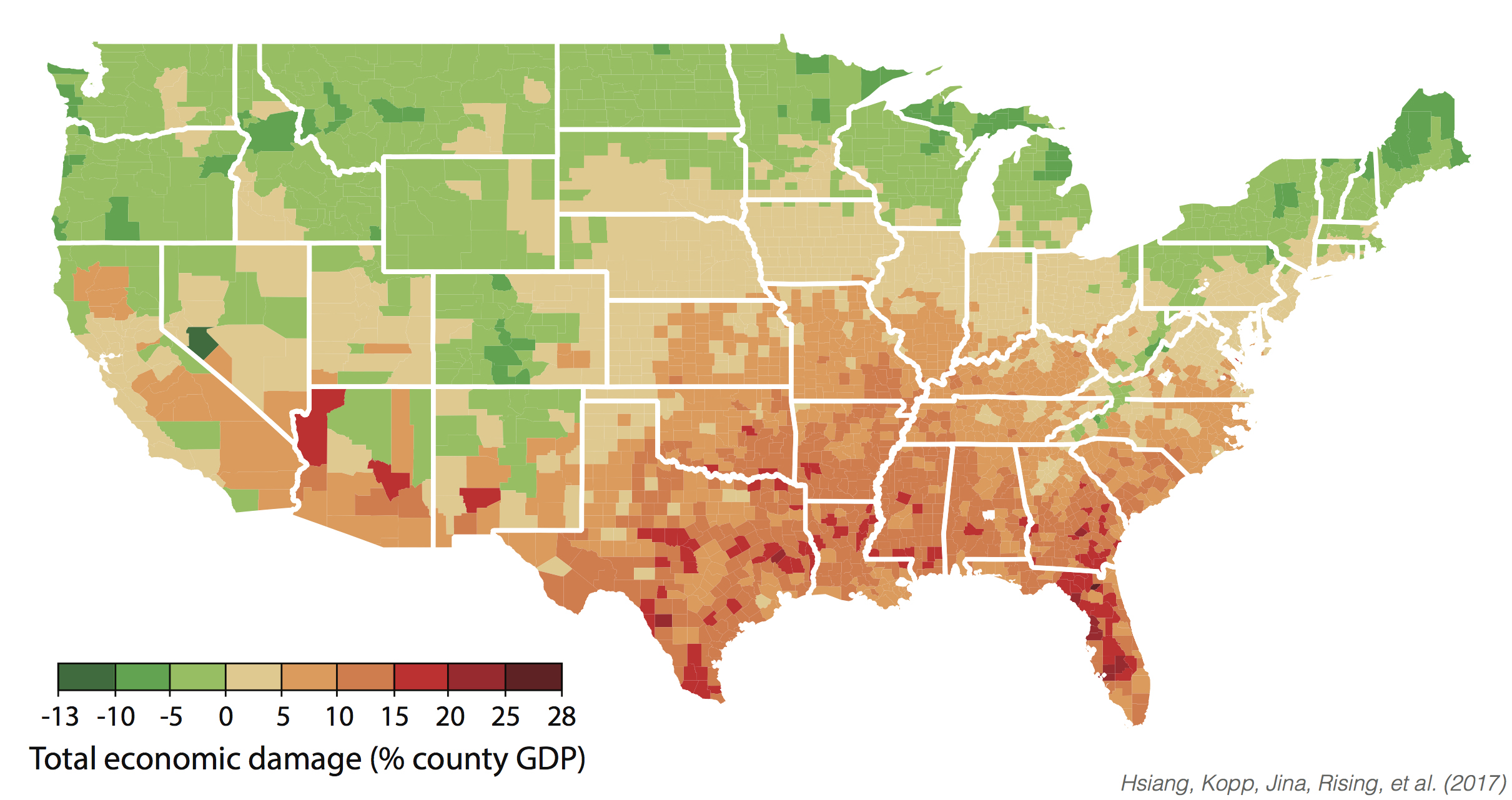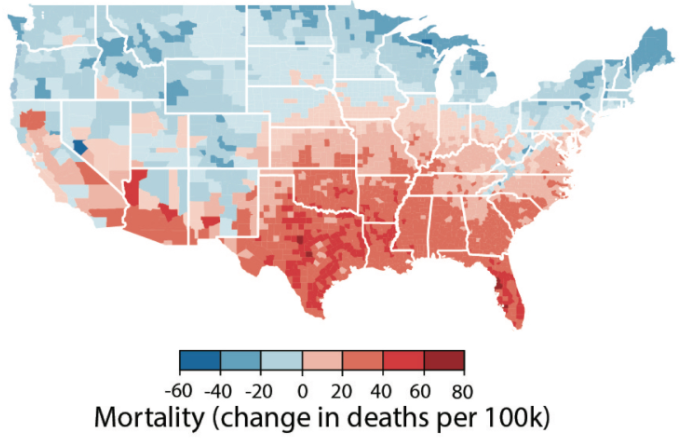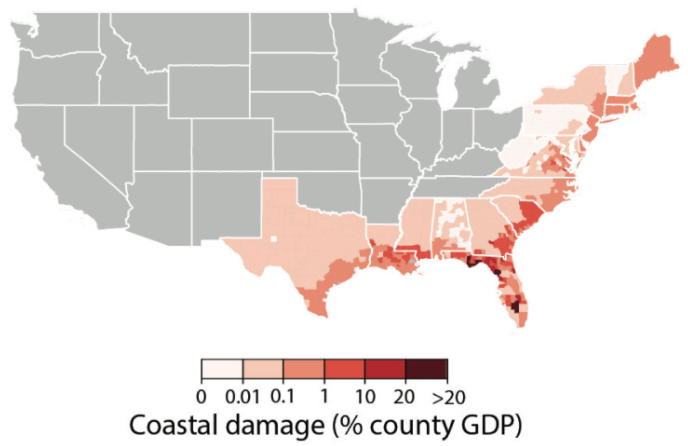If the world continues its rate of greenhouse-gas emissions, America will feel the effects in just a few decades. But not all parts of the country will be affected in the same way.
According to a new study, the economies of states in the South, Midwest, and mid-Atlantic will suffer the most, seeing gross domestic product (GDP) losses of up to 28 percent. Meanwhile, many states along the United States’ northern border may actually see small boosts to their GDP as their fields produce higher yields, their buildings require less energy to heat in winter, and fewer residents die of cold-related causes.
The study’s authors—a team of economists and public policy and geoscience researchers with American universities and think tanks—made this handy map to demonstrate these likely trends:

(Map: Solomon Hsiang et al/Science)
The map shows what each U.S. county’s annual average loss is projected to be in GDP between the years 2080 and 2099, compared to what would happen if the climate stayed the same as it is today. Positive numbers, signified by red shades, indicate GDP losses, while negative numbers and green shades indicate growth.
In making their economic calculation, the researchers considered yields of corn, wheat, soybeans, and cotton; people dying from extreme heat and cold; electricity demand; people’s productivity, especially from those who work outdoors, such as farm and construction workers; flooding and hurricanes; and crime. All of these sectors are expected to change for the worse, on a national scale, as a result of global warming. Still, exactly what happens in any locality can vary quite a bit.
America’s agricultural yields overall, for example, are expected to fall 9 percent for every one degree Celsius that the global climate warms. But more rain and gentler temperatures mean that northwest farms will actually see more food and cotton grow on every acre. Their improved yields aren’t expected to be enough to make up for losses in the Midwest, east, and South, however:

(Map: Solomon Hsiang et al/Science)
More Americans are supposed to die from extreme temperatures on a warmer Earth than do today. Americans living in the northern part of the country will actually be better protected from cold-related deaths, but significant numbers of people are expected to die of heat-related deaths in the South. The net rate, the researchers write, is supposed to be about five more deaths for every 100,000 people for every one degree Celsius of warming:

(Map: Solomon Hsiang et al/Science)
Finally, coastal damage from sea level rise and worse hurricanes won’t affect much of the country in the way it will the Gulf and East Coast:

(Map: Solomon Hsiang et al/Science)
Politicians who oppose curbing greenhouse gases sometimes bolster their arguments by arguing that climate models show that global warming is supposed to help some sectors of the economy. This research lays bare exactly what that means: a boost for some parts of America that’s more than offset by sharp declines in other regions, plus sharper economic inequality between the country’s north and south.


